Western riding is a style of horseback riding which evolved from the ranching and warfare traditions brought to the Americas by the Spanish Conquistadors, and both equipment and riding style evolved to meet the working needs of the cowboy in the American West. American cowboys needed to work long hours in the saddle over rough terrain, sometimes needing to rope cattle with a lariat (or lasso). Because of the necessity to control the horse with one hand and use a lariat with the other, western horses were trained to neck rein, that is, to change direction with light pressure of a rein against the horse's neck. Horses were also trained to exercise a certain degree of independence in using their natural instincts to follow the movements of a cow, thus a riding style developed that emphasized a deep, secure seat, and training methods encouraged a horse to be responsive on very light rein contact.
Though there are significant differences in equipment, there are fewer differences between English and Western riding than appear at first glance. Both styles require riders to have a solid seat, with the hips and shoulders balanced over the feet, with hands independent of the seat so as to avoid jerking the horse in the mouth and interfering with its performance. Wikipedia
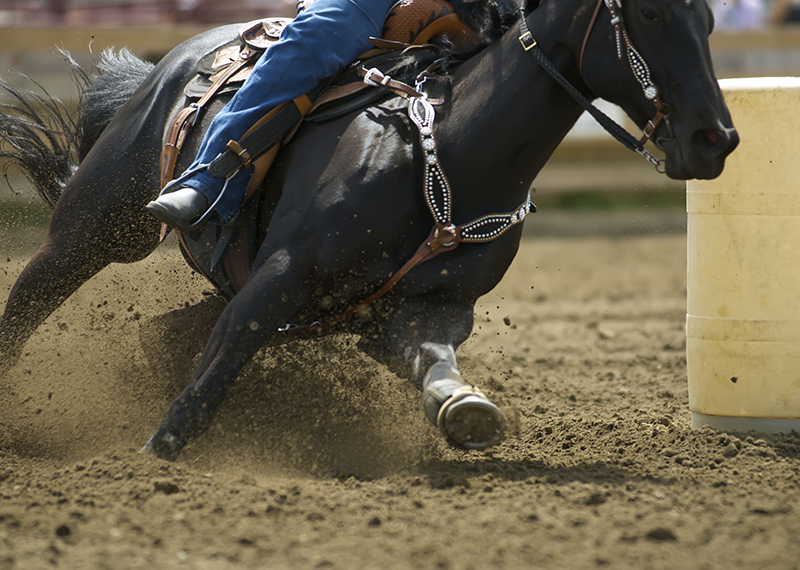
Barrel Racing
Barrel racing is a rodeo event in which a horse and rider attempt to complete a clover-leaf pattern around preset barrels in the fastest time. Though both boys and girls compete at the youth level and men compete in some amateur venues and jackpots, in collegiate and professional ranks, it is primarily a rodeo event for women. It combines the horse's athletic ability and the horsemanship skills of a rider in order to safely and successfully maneuver a horse through a clover leaf pattern around three barrels (typically three fifty-five gallon metal or plastic drums) placed in a triangle in the center of an arena. Read more...
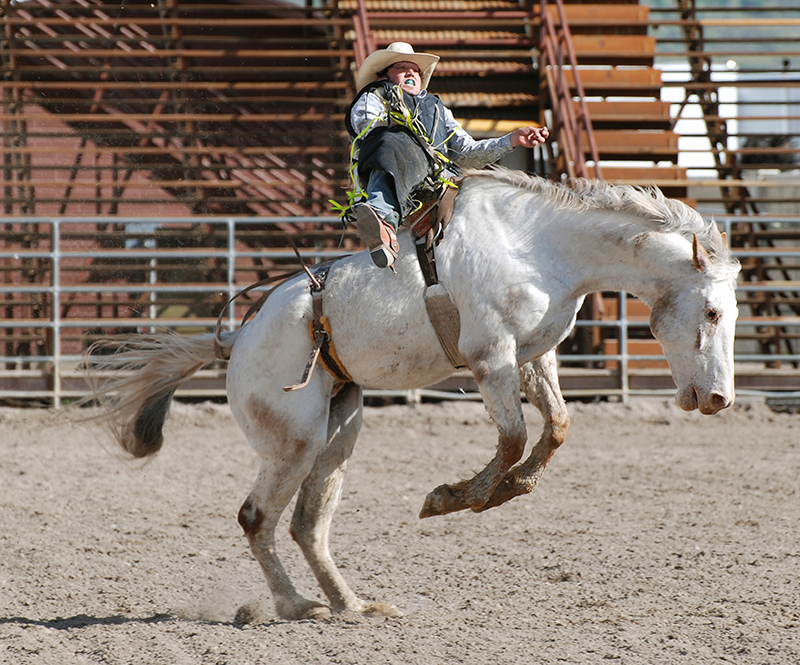
Bronc Riding
Bronc riding, either bareback bronc or saddle bronc competition, is a rodeo event that involves a rodeo participant riding on a horse (sometimes called a bronc or bronco), that attempts to throw or buck off the rider. Originally based on the necessary horse breaking skills of a working cowboy, the event is now a highly stylized competition that utilizes horses that often are specially bred for strength, agility, and bucking ability. It is recognized by the Professional Rodeo Cowboys Association (PRCA) and the International Professional Rodeo Association (IPRA). Two organizations that strongly promote the event in the United States are the Professional Roughstock Series (PRS) and World's Toughest Rodeo (WTR). Read more...
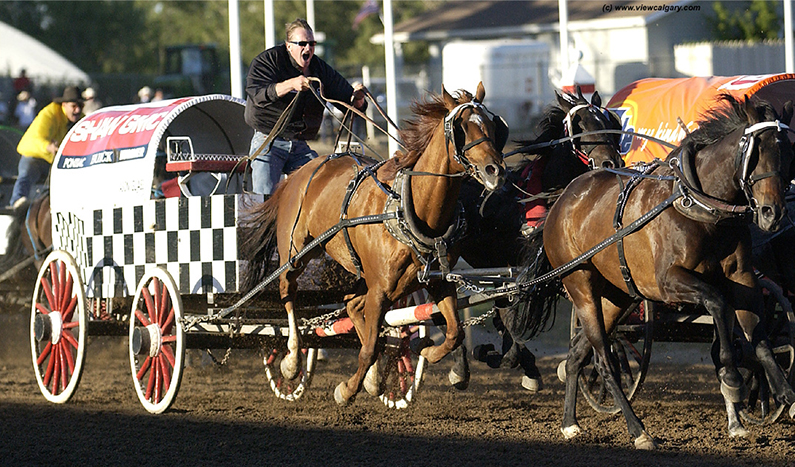
Chuckwagon Racing
Chuckwagon racing is an equestrian rodeo sport in which drivers in a chuckwagon led by a team of Thoroughbred horses race around a track. The sport is most popular in the Prairie Provinces of Canada, where the World Professional Chuckwagon Association and the Canadian Professional Chuckwagon Association, are the two major racing circuits. Read more...
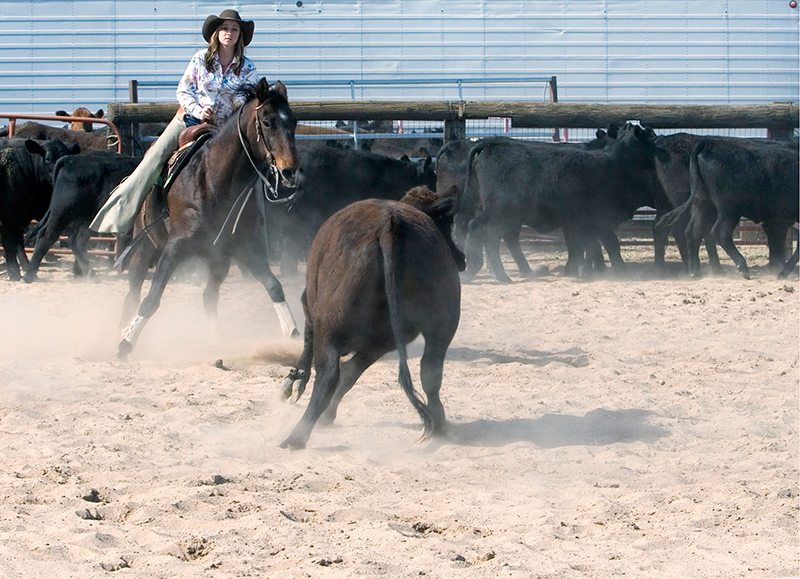
Cutting
Cutting is a western-style equestrian competition in which a horse and rider work as a team before a judge or panel of judges to demonstrate the horse's athleticism and ability to handle cattle during a 2 1⁄2 minute performance, called a "run." Each contestant is assisted by four helpers: two are designated as turnback help to keep cattle from running off to the back of the arena, and the other two are designated as herd holders to keep the cattle bunched together and prevent potential strays from escaping into the work area. Read more...
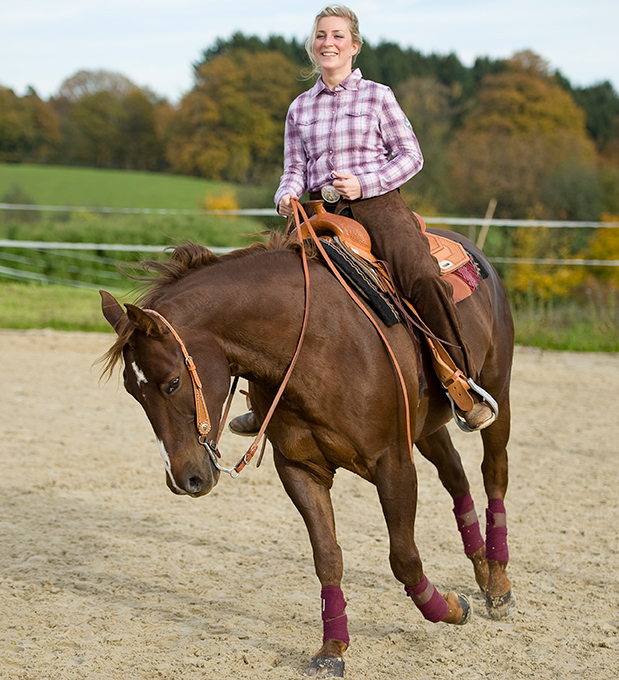
Western Pleasure
Western Pleasure is a western style competition at horse shows that evaluates horses on manners and suitability of the horse for a relaxed but collected gait cadence and relatively slow speed of gait, along with calm and responsive disposition. The horse is to appear to be a "pleasure" to ride and very comfortable, while being very smooth. Most light horse breeds in the United States and Canada may compete in western pleasure classes, either in open competition or at shows limited to a single breed. However, horse conformation and temperament play a role in this event, and hence animals that are calm, quiet, have collected, soft gaits and the strong muscling required to sustain slow, controlled movement are the most competitive. Read more...
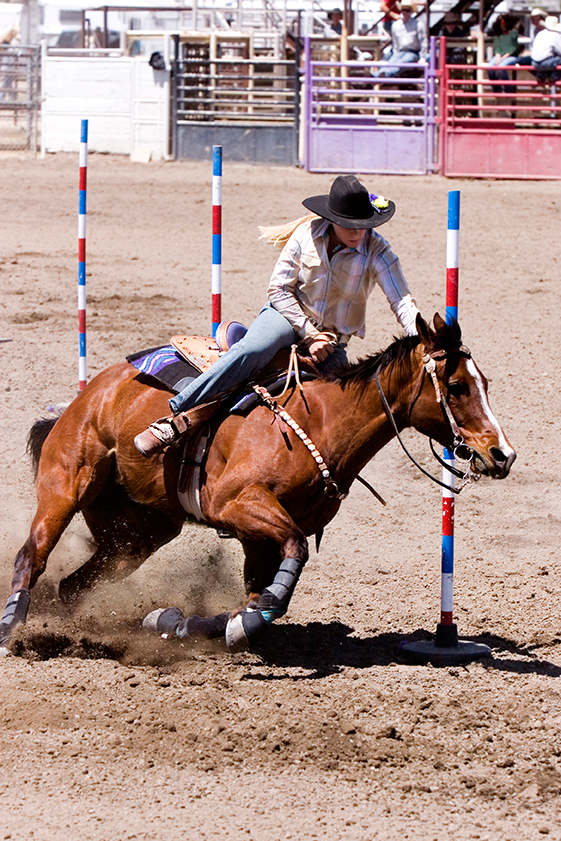
Pole Bending
Pole bending is timed event that features a horse and one mounted rider, running a weaving or serpentine path around six poles arranged in a line. This event is usually seen in high school rodeos and 4-H events as well as American Quarter Horse Association, Paint, and Appaloosa sanctioned shows as well as at many gymkhana events. Setting up the pole bending pattern is crucial to the success of this event. The pole bending pattern is to be run around six poles. Each pole is to be 21 feet (6.4 meters) apart, and the first pole is to be 21 feet (6.4 meters) from the starting line. Poles shall be set on top of the ground, six feet (1.8 meters) in height, with no base more than 14 inches (35 cm) in diameter. These are the measurements implemented and endorsed by the National High School Rodeo Association. The purpose of a universal pattern is to be able to track and compare times everywhere poles are run. Read more...
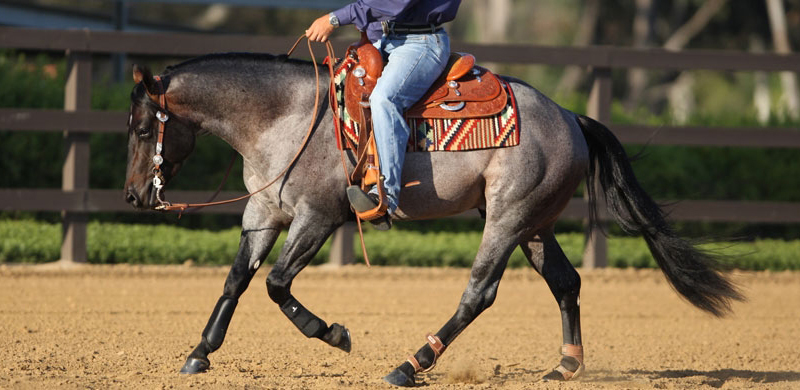
Reining
Reining is a western riding competition for horses where the riders guide the horses through a precise pattern of circles, spins, and stops. All work is done at the lope (a slow, relaxed version of the horse gait more commonly known worldwide as the canter), or the gallop (the fastest of the horse gaits). Originating from working cattle, reining is often described as a Western form of dressage riding, as it requires the horse to be responsive and in tune with its rider, whose aids should not be easily seen, and judges the horse on its ability to perform a set pattern of movements. Read more...
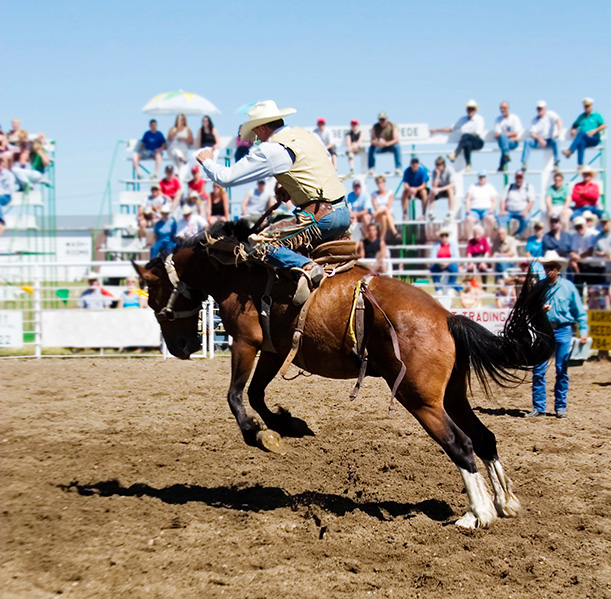
Rodeo
Rodeo is a competitive sport that arose out of the working practices of cattle herding in Spain, Mexico, and later the United States, Canada, South America, Australia and New Zealand. It was based on the skills required of the working vaqueros and later, cowboys, in what today is the western United States, western Canada, and northern Mexico. Today it is a sporting event that involves horses and other livestock, designed to test the skill and speed of the cowboys and cowgirls. American style professional rodeos generally comprise the following events: tie-down roping, team roping, steer wrestling, saddle bronc riding, bareback bronc riding, bull riding and barrel racing. The events are divided into two basic categories: the rough stock events and the timed events. Read more...

Roping
Calf roping, also known as tie-down roping, is a rodeo event that features a calf and a rider mounted on a horse. The goal of this timed event is for the rider to catch the calf by throwing a loop of rope from a lariat around its neck, dismount from the horse, run to the calf, and restrain it by tying three legs together, in as short a time as possible. Read more...































